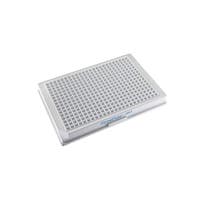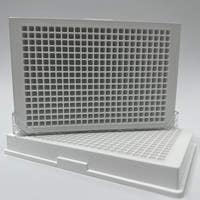
AlphaScreen Streptavidin Donor Beads, 5 mg
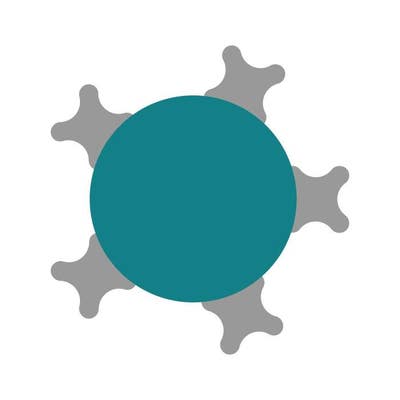

AlphaScreen Streptavidin Donor Beads, 5 mg
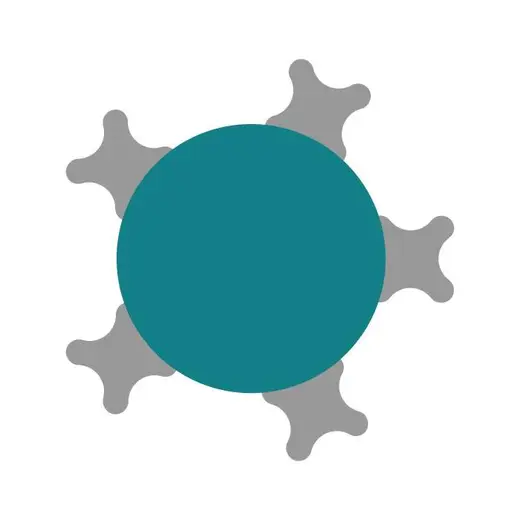


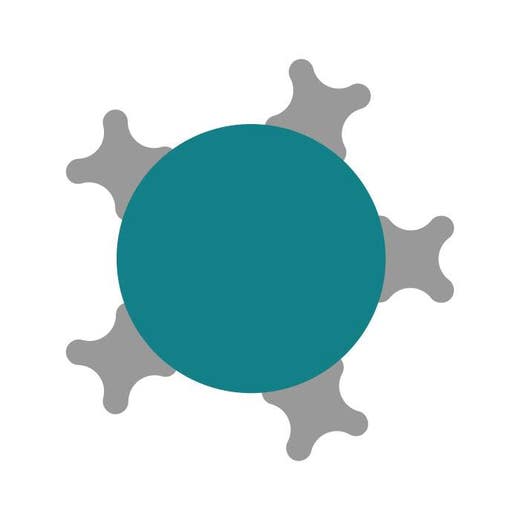


Alpha Donor beads coated with streptavidin, for biotinylated biomolecules for use in Alpha no-wash assays.
For research use only. Not for use in diagnostic procedures. All products to be used in accordance with applicable laws and regulations including without limitation, consumption and disposal requirements under European REACH regulations (EC 1907/2006).
| Feature | Specification |
|---|---|
| Application | Protein-Protein Interaction |
Alpha Donor beads coated with streptavidin, for biotinylated biomolecules for use in Alpha no-wash assays.
For research use only. Not for use in diagnostic procedures. All products to be used in accordance with applicable laws and regulations including without limitation, consumption and disposal requirements under European REACH regulations (EC 1907/2006).



AlphaScreen Streptavidin Donor Beads, 5 mg



AlphaScreen Streptavidin Donor Beads, 5 mg



Product information
Overview
These beads can be used to capture biotinylated antibodies, proteins, peptides, nucleic acids, and small molecules, and can be used in conjunction with AlphaScreen, AlphaLISA, or AlphaPlex Acceptor beads to create no-wash assays for:
- Protein-protein interaction assays
- Protein-DNA interaction assays
- Protein-RNA interaction assays
- Protein-small molecule interaction assays
- Analyte detection assays
- Biomarker detection assays
- Antibody detection assays
- Enzymatic assays
- Other immunoassays
In a typical Alpha assay, 1 mg of Donor beads is sufficient to run 1,000-2,000 wells using a 25 µL reaction volume. Bead concentration can be adjusted for optimal performance.
AlphaScreen® and AlphaLISA™ are bead-based assay technologies used to study biomolecular interactions in a microplate format. The acronym ""Alpha"" stands for amplified luminescent proximity homogeneous assay. As the name implies, some of the key features of these technologies are that they are non-radioactive, homogeneous proximity assays. Binding of molecules captured on the beads leads to an energy transfer from one bead to the other, ultimately producing a luminescent/fluorescent signal. To understand how a signal is produced, one must begin with an understanding of the beads. AlphaScreen and AlphaLISA assays require two bead types: Donor beads and Acceptor beads. Each bead type contains a different proprietary mixture of chemicals, which are key elements of the AlphaScreen technology. Donor beads contain a photosensitizer, phthalocyanine, which converts ambient oxygen to an excited and reactive form of O2, singlet oxygen, upon illumination at 680 nm. Please note that singlet oxygen is not a radical; it is molecular oxygen with a single excited electron. Like other excited molecules, singlet oxygen has a limited lifetime prior to falling back to ground state. Within its 4 µsec half-life, singlet oxygen can diffuse approximately 200 nm in solution. If an Acceptor bead is within that proximity, energy is transferred from the singlet oxygen to thioxene derivatives within the Acceptor bead, subsequently culminating in light production at 520-620 nm (AlphaScreen) or at 615 nm (AlphaLISA). In the absence of an Acceptor bead, singlet oxygen falls to ground state and no signal is produced. This proximity-dependent chemical energy transfer is the basis for AlphaScreen's homogeneous nature.
Specifications
| Application |
Protein-Protein Interaction
|
|---|---|
| Automation Compatible |
Yes
|
| Bead Type or Material |
Alpha Donor
|
| Brand |
AlphaLISA
|
| Conjugates |
Streptavidin
|
| Detection Modality |
Alpha
|
| Product Group |
Beads
|
| Shipping Conditions |
Shipped in Blue Ice
|
| Target Class |
Binding Assay
|
| Technology |
Alpha
|
| Unit Size |
5 mg
|
Video gallery

AlphaScreen Streptavidin Donor Beads, 5 mg

AlphaScreen Streptavidin Donor Beads, 5 mg

Resources
Are you looking for resources, click on the resource type to explore further.
DNA-protein interactions are popular targets for the development of novel therapeutic drugs. There are a variety of assay formats...
Get the latest insights on KRAS and see how it has switched from being an undruggable to a druggable cancer target.
In this white...
Biological drug products often elicit an immune response in patients that can lead to clinical consequences of the presence of...
Biomolecular interactions are crucial for biological processes like transcription, translation, and cell signaling. These...
In this technical note, we will describe how to set up Alpha SureFire ® Ultra ™ Multiplex kits on the EnVision ™ multimode plate...
Technical advancements in antibody engineering has brought about greater interest in more novel antibody therapeutic design and...
SDS, COAs, Manuals and more
Are you looking for technical documents related to the product? We have categorized them in dedicated sections below. Explore now.
-
LanguageEnglishCountryUnited States
-
LanguageEnglishCountryEU
-
LanguageItalianCountryItaly
-
Lot number3327630Lot dateSeptember 19, 2024Name
-
Lot number3250867Lot dateJanuary 29, 2024Name
-
Lot number3225295Lot dateNovember 16, 2023
-
Lot number3227474Lot dateNovember 9, 2023
-
Lot number3190852Lot dateSeptember 11, 2023Name


How can we help you?
We are here to answer your questions.
































